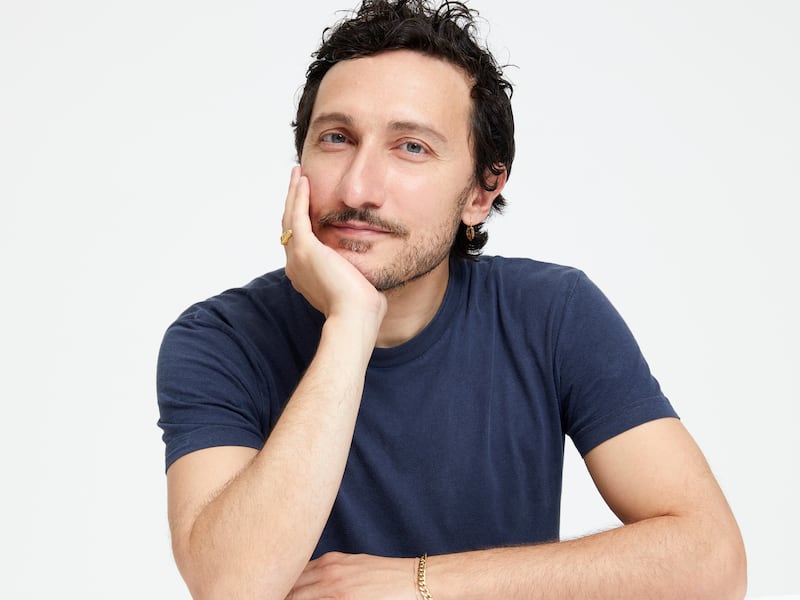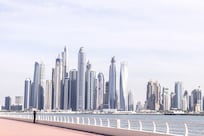Etro was born in 1968, establishing itself as a maker of quality fabrics known for its breezy, boho identity. But this year, with creative director Marco de Vincenzo at its helm, the Italian fashion house has stepped away from this image as the Sicilian-born designer became the first non-family member to lead the house.
Before his appointment in 2022, Etro had always been under the watchful eye of a family member – from founder Gimmo Etro to Kean and Veronica Etro, who led the menswear and womenswear divisions until recently. Through the decades, Etro remained most famed for its paisley print first created by its founder.
In 2021, however, the family sold 60 per cent of the company to the private equity firm L Catterton, which in turn, handed the creative reins to de Vincenzo. His remit? To inject new life and passion into the brand.
"To me, Etro is not only paisley. It is a lot of other amazing things,” explains de Vincenzo of the brand. “Etro is fabrics, prints, heritage, archive and craftsmanship.”
On paper, the hiring of de Vincenzo seemed unlikely. Something of an industry veteran, he is known for his pared-back, almost minimalist aesthetic, while in comparison, Etro has an ingrained love affair with colourful patterning. Yet, he explains, the overlap between the two runs deep.
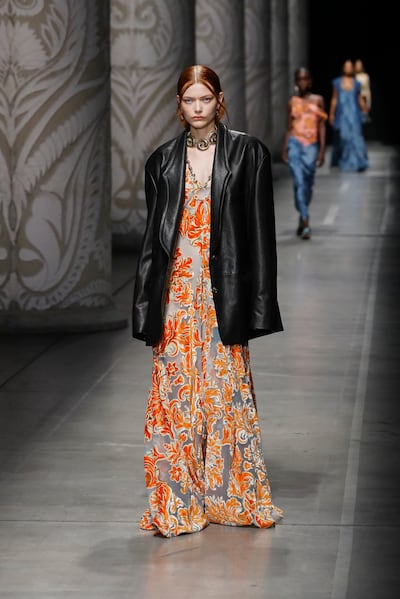
“There is a strong link between me and Etro. The brand was born in 1968 as a textile factory, and fabrics have been my obsession since I started to work on ready-to-wear collections,” he tells The National.
Long before joining Etro, every one of his collections began with the cloth. “I spend a lot of time in the factories, and the fabrics are always my starting point when I work on a new collection. Then comes shapes, but shapes are determined by the fabrics we decided to present, and not the other way around.”
De Vincenzo is highly regarded in the industry. He joined Fendi in 2000, becoming head designer of leather goods in 2008, a role he still holds. He launched his eponymous ready-to-wear line in 2009, the same year the then-Vogue Italia editor-in-chief Franca Sozzani crowned him the winner of the Who is on Next competition. In February 2022, de Vincenzo launched Superno, an upcycling fashion project. After putting his eponymous brand on hold in 2020, he was appointed creative director at Etro in 2022, overseeing the men’s, women’s, home and, most recently, the children’s division.
“It is a huge responsibility,” he says of being at the helm of such a broad base. He is also fully aware of the responsibility of stepping into such a key role in a family company.
“But what is clear is that my objective is to renew the brand without forgetting what the Etro family has done in the past. They did a great job, but now it is my turn to make the brand appealing and move with the times.”
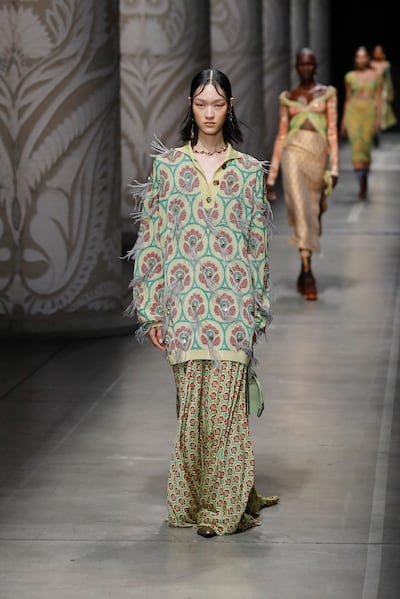
This has played out in collections that offer a radical departure from the bohemia of the old Etro. His debut collection for spring/summer 2023, for example, noticeably lacked any significant reference to paisley, one of Etro’s signature patterns since the 1980s.
“I think balancing is the right word. Balancing new proposals with classic Etro styles, offering different alternatives, new prints, new textures, new fabrics and new shapes to attract new clients while nurturing loyalty,” he says.
Although he was named the new head in May 2022, for his debut show in September that year, de Vincenzo only had hands-on access to the team and studio a month in advance.
“I am the kind of person who loves to study things in-depth and, in the four weeks I had to prepare the show, that was not possible. It was not easy, but haste is not always a bad counsellor, and I was very lucky to be surrounded by the Etro team that helped me a lot.”
Despite the rush, he offered a new perspective – as gleaming fringed satin mini dresses, florals printed onto dark-wash denim and delicate leaves beaded onto prim, cropped jumpers. It was, and remains, a marked departure for Etro. Yet, despite being well received, the rushed event still rankles slightly.
“One and a half years later, I am proud of the job we have done for the debut, but I see the brand with different eyes now. I have had time to study, and to deepen our knowledge. The first show was like a first date, and now I feel like I have found the right balance to stay loyal both to Marco de Vincenzo and to Etro. It does not mean I have finished my studies here at Etro, it only means I feel I found my way to interpret this incredible brand.”
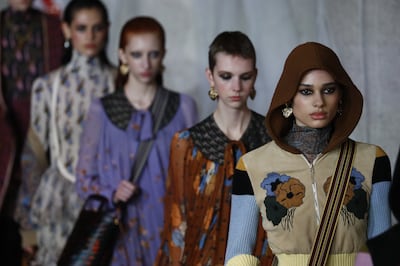
Now, several seasons in, that interpretation is steering the house into decidedly edgier territory. For spring/summer 2024, de Vincenzo covered open-fronted shirt dresses in rococo flourishes, draped blousy florals into slinky, floor-length skirts with knotted details and transformed delicate lace into sheer body suits. Glossy jacquards were cut into vast, circle dresses, midi skirts arrived in mid-wash denim, and many looks were tempered by oversized leather jackets, sleeveless gilets and oversized coats for a dash of urban cool.
De Vincenzo’s brevity of line, however, is perhaps best encapsulated in the Etro Vela bag, introduced in spring last year. Devoid of patterning, this buttery-soft leather bag has a distinctive V-shaped opening and is decorated with a single shiny, emblemed medallion. The Vela taps into de Vincenzo’s skill for unfussy lines and is already proving a hit with customers. There is now a mini version available in pops of bright colour.
While de Vincenzo can now immerse himself in the Etro archive at will, such access was once worlds away for the boy who grew up in Messina, Sicily. “I am so proud of my origins, and my takeaways from Sicily are the quest for knowledge, the curiosity,” he explains. “But growing up in Sicily in the 1980s and 1990s meant being far from the fashion cities. It was hard to be connected with the fashion world as there was no internet, and all we learnt about fashion came through TV and magazines that were not easy to find.”
At the age of 18, de Vincenzo moved to Rome, however, his roots remain a rich mine of ideas. “Sicily is a strong source of inspiration for me. If you take a look at my latest two shows, you see columns [in the set of the spring/summer 2024 show] to recreate a temple and masks from the Greek-Roman theatre [for autumn/winter 2024] to represent the emotions. That’s very Sicilian.”
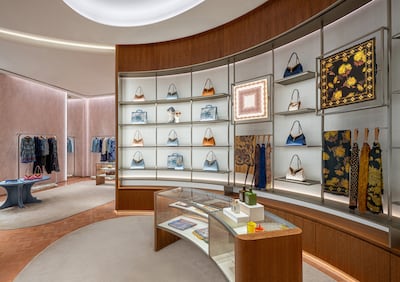
Leading both Etro and the leather arm of Fendi, the big question is how he finds time to work on both. “I am so used to it,” de Vincenzo explains. “I started sharing my time between two jobs when I presented my namesake label in 2009.
“I am happy to have the opportunity to work for both Etro and Fendi, and also happy to have their trust. It is intense, as the fashion rhythm sometimes is tough, but this is the life I chose, and I like it. I am very proud of the overall result.”
